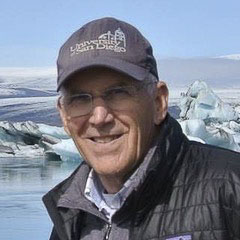Bob Ortblad warns of what will happen if the Interstate Bridge Replacement Program team’s plan to politically pressure the Coast Guard to accept its Locally Preferred Alternative
Editor’s note: Opinions expressed in this letter to the editor are those of the author alone and do not reflect the editorial position of ClarkCountyToday.com
Washington and Oregon are risking $2.5 billion of federal grants to replace the Columbia River I-5 Bridge. The U.S.Coast Guard has suggested the Interstate Bridge Replacement Program (IBR) consider a tunnel as an alternative to an impractical tall bridge (178-foot clearance).

The USCG must see that the IBR’s “Tunnel Concept Assessment” is incorrect and misleading. The IBR is ignoring the USCG‘s 178-foot clearance requirement and has pressed municipalities and agencies to approve its “Locally Approved Alternative” (LPA) a too low bridge (116-foot clearance).
If the IBR‘s plan to politically pressure the USCG to accept its LPA fails, federal funds will go to better projects.
The Washington-Oregon Legislative Committee should support the USCG’s tunnel evaluation recommendation and hire a consultant, independent of the IBR, to do an honest evaluation of an I-5 immersed tunnel.
Bob Ortblad, MSCE, MBA
Seattle
Also read:
- Opinion: OIC tells consumers not to pay for ‘insurance’ you won’t likely benefit from: Does that include WA Cares?Elizabeth New (Hovde) of the Washington Policy Center believes you should consider yourself warned by the Office of the Insurance Commissioner about WA Cares and its maybe-only benefit.
- Opinion: Same road, different speed limit?Target Zero Manager Doug Dahl addresses a question about speed limit signs going into and leaving town.
- Opinion: Hiding the growing cost of the Interstate Bridge replacementJoe Cortright of the City Observatory addresses the rising cost of the Interstate 5 Bridge replacement project.
- Letter: ‘This election I am NOT voting for Greg Cheney’Clark County resident Wynn Grcich shares her thoughts on Rep. Greg Cheney and the issue of fluoridation in area drinking water.
- POLL: Should biological males who identify as females be allowed to compete in athletic events against biological females?Should biological males who identify as females be allowed to compete in athletic events against biological females?










